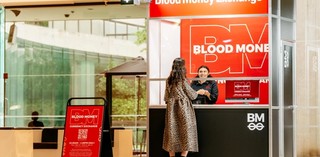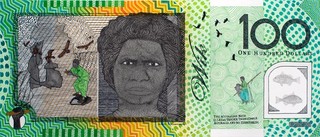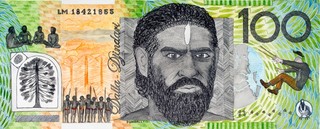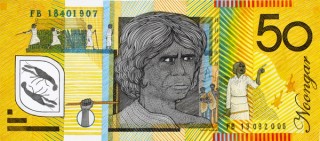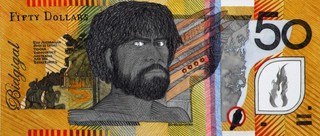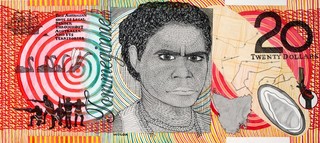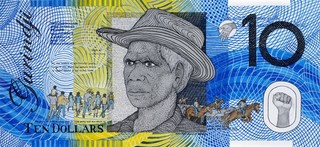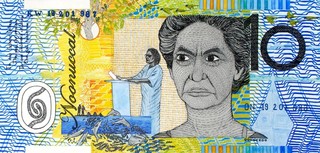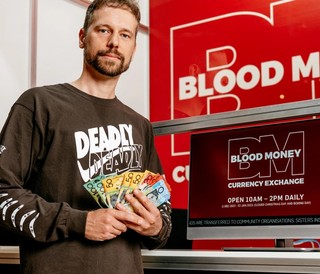
Artist Ryan Presley with Blood Money Currency Exchange Terminal 2018-ongoing (installation view) / Presented as part of ‘Embodied Knowledge: Queensland Contemporary Art’ / November 2022 / Image courtesy: Queensland Art Gallery | Gallery of Modern Art / Photograph: Joe Ruckli / View full image
About the Artist
Dr. Ryan Presley was born in 1987 in Alice Springs, and currently lives and works in Brisbane. His father’s family is Marri Ngarr and originate from the Moyle River region in the Northern Territory. His mother’s family were Scandinavian immigrants to Australia.
Presley’s work has been included in ‘We Change the World’, National Gallery of Victoria, Melbourne, 2021; 'Tarnanthi', Art Gallery of South Australia, Adelaide, 2019; 'Just Not Australian', Artspace, Sydney, 2019; 'Trade Markings: Frontier Imaginaries Ed No. 5', Van Abbemuseum, Eindhoven, Netherlands 2018; 'Primavera: Young Australian Artists', Museum of Contemporary Art, Sydney, 2018; 'Telstra National Aboriginal and Torres Strait Islander Art Awards', Darwin, 2016; and 'TarraWarra Biennial', TarraWarra Museum of Art, Healsville, 2016. His solo exhibition 'Fresh Hell' was presented at Adelaide Contemporary Experimental, 2022, and is forthcoming at Gertrude Contemporary, Melbourne, 2023; while 'Ryan Presley: Prosperity' was held at the Institute of Modern Art in 2018. His artworks are held in major public collections, including Art Gallery of South Australia, National Gallery of Victoria, Murdoch University, Museum of Contemporary Art, and Queensland Art Gallery | Gallery of Modern Art. Presley completed a PhD at the Queensland College of Art, Griffith University, in 2016.


